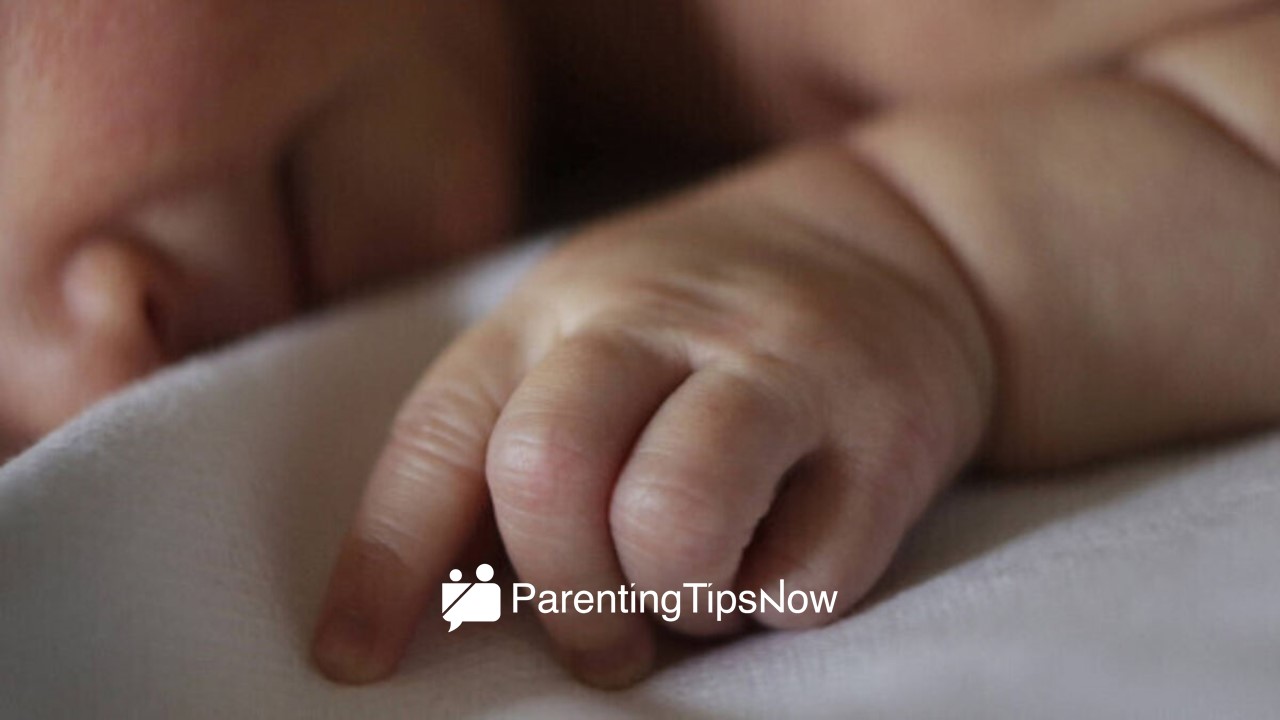Table of Contents
ToggleThe unexplainable tragedy of sudden infant death syndrome (SIDS) strikes fear into the hearts of parents worldwide, leaving them grappling with an overwhelming sense of helplessness. This silent killer claims the lives of seemingly healthy infants, leading to a devastating loss that leaves families shattered and communities in mourning. Despite years of research and medical advancements, SIDS remains a perplexing mystery that continues to haunt new parents as they navigate the unpredictable journey of parenthood. In this article, we delve into 7 crucial insights about SIDS that every parent must know in order to protect their precious little ones and ease their anxieties surrounding this elusive threat.
Understanding the Risk of Sudden Infant Death Syndrome (SIDS) Among Filipino Babies
As Filipino parents, it is crucial to understand the risk of Sudden Infant Death Syndrome (SIDS) in order to protect our precious little ones. Research suggests that factors such as maternal smoking during pregnancy, improper sleeping positions, and overheating can significantly increase the likelihood of SIDS among Filipino babies. Furthermore, cultural practices such as co-sleeping and overcrowded bed sharing have been identified as potential risk factors for SIDS in the Filipino community.
In a country rich with diverse traditions and beliefs surrounding infant care, it is essential for parents to strike a balance between upholding cultural norms and prioritizing safe sleep practices. By raising awareness about the specific risks associated with SIDS among Filipino babies, we can work towards reducing the incidence of this tragic phenomenon. Education and open communication are key to empowering parents to make informed decisions when it comes to creating a safe sleep environment for their infants.

What is Sudden Infant Death Syndrome (SIDS)?
Sudden Infant Death Syndrome (SIDS) is a heartbreaking and perplexing phenomenon that can strike without warning, leaving parents devastated and bewildered. This silent killer claims the lives of seemingly healthy infants under one year old, with no identifiable cause found after a thorough investigation. Despite decades of research, medical experts are still baffled by the exact mechanisms behind SIDS, making prevention strategies challenging to pinpoint.
One compelling theory suggests that certain babies may have an underlying vulnerability in their brainstem’s ability to regulate basic bodily functions like breathing and heart rate during sleep. Factors such as sleeping on soft surfaces, exposure to cigarette smoke, or overheating could potentially trigger this latent vulnerability and lead to a tragic outcome. While there’s no foolproof way to eliminate the risk entirely, practicing safe sleep habits like placing infants on their backs for sleep in a firm crib free of blankets or toys can significantly reduce the chances of SIDS occurring.

Risk Factors for Sudden Infant Death Syndrome (SIDS)
One significant risk factor for Sudden Infant Death Syndrome (SIDS) is unsafe sleeping practices, such as placing infants on their stomachs or sides to sleep. This can obstruct the baby’s airway and increase the likelihood of SIDS occurring. Additionally, exposure to secondhand smoke has been identified as a risk factor for SIDS, as it can compromise a baby’s respiratory system and increase their vulnerability to sudden, unexpected death.
Moreover, maternal factors like smoking during pregnancy, being under the age of 20, or late prenatal care also contribute to the risk of SIDS. Stress during pregnancy or after childbirth can also play a role in increasing the chances of SIDS taking place. It is crucial for parents and caregivers to be aware of these risk factors and take proactive measures to minimize any potential risks to ensure the safety and well-being of their infants.

Safe Sleep Practices for Filipino Infants
Ensuring safe sleep practices for Filipino infants is crucial to reducing the risk of Sudden Infant Death Syndrome (SIDS). One important practice is placing babies on their backs to sleep, as this position has been found to be the safest. Additionally, it’s essential to create a comfortable and safe sleep environment by using a firm mattress and avoiding soft bedding that could obstruct an infant’s airway.
In the Philippines, where co-sleeping is a common practice, it’s important to ensure that parents are educated on how to share a bed with their infants safely. Keeping pillows, blankets, and other items away from the baby’s sleeping area can help prevent accidental suffocation or sudden death during sleep. By following these guidelines and promoting safe sleep habits within Filipino communities, we can work towards reducing the incidence of sudden infant death syndrome and ensuring that every child has a safe start in life.

Recognizing Signs and Symptoms of Sudden Infant Death Syndrome (SIDS)
Recognizing the signs and symptoms of Sudden Infant Death Syndrome (SIDS) is crucial for all parents, especially in understanding this mysterious and devastating occurrence. While the exact cause of SIDS remains unknown, certain risk factors and warning signs can provide some insight. These may include a vulnerable sleep environment, such as soft bedding or sleeping on their stomachs, as well as premature birth or low birth weight. Additionally, parental smoking during pregnancy or after birth can significantly increase the risk of SIDS.
It’s essential for parents to educate themselves on these potential indicators and take proactive steps to reduce the risk of SIDS. By maintaining a safe sleep environment for their infants, such as placing them on their backs to sleep and removing any loose bedding or toys from the crib, parents can actively safeguard against this tragic occurrence. Early recognition of warning signs combined with appropriate preventative measures is key to protecting our little ones against sudden infant death syndrome.

Importance of Regular Check-ups and Vaccinations of Sudden Infant Death Syndrome
Regular check-ups and vaccinations play a crucial role in reducing the risk of Sudden Infant Death Syndrome (SIDS) among infants. By ensuring that babies are up-to-date with their immunizations and regularly monitored by healthcare professionals, parents can help safeguard their little ones against this devastating condition. Vaccinations, like the DTaP vaccine, not only protect infants from serious illnesses but also contribute to overall well-being, potentially lowering the chances of SIDS occurrence.
Furthermore, regular check-ups allow doctors to track an infant’s growth and development closely, enabling them to detect any underlying health concerns early on. This proactive approach can lead to timely interventions if needed, reducing the risk factors associated with SIDS. As such, parents should prioritize these routine visits as an integral part of their baby’s healthcare regimen to promote a safe and healthy start in life.

Support Resources for Parents Affected by Sudden Infant Death Syndrome (SIDS)
For parents affected by Sudden Infant Death Syndrome (SIDS), finding support resources is crucial to coping with the devastating loss of their child. In the Philippines, organizations like the Philippine Sudden Infant Death Syndrome Foundation offer grief counseling, support groups, and educational resources to help parents navigate their grief journey. These support networks provide a safe space for parents to share their experiences, connect with others who understand their pain, and receive guidance on how to cope with the loss.
In addition to community organizations, online platforms such as forums and social media groups can also serve as valuable support resources for parents dealing with SIDS. These virtual spaces allow parents to reach out to others facing similar challenges, seek advice from experts in the field, and access information about coping strategies and mental health resources. Engaging in these online communities can help parents feel less isolated in their grief and provide them with a sense of belonging during this difficult time.

Ways to Raise Awareness and Prevent Sudden Infant Death Syndrome (SIDS)
One effective way to raise awareness and prevent Sudden Infant Death Syndrome (SIDS) is by promoting safe sleep practices. This includes placing babies on their backs to sleep, using a firm mattress with a fitted sheet, and avoiding soft bedding or toys in the crib. Additionally, keeping the baby’s sleeping area free from any potential hazards like cords or loose blankets can greatly reduce the risk of SIDS.
Another crucial aspect is ensuring a smoke-free environment for the baby. Research has shown that exposure to cigarette smoke increases the likelihood of SIDS. Parents should also be educated on the importance of breastfeeding, as it has been linked to a lower risk of SIDS. By advocating for these preventative measures and disseminating accurate information, we can take significant steps toward reducing the incidence of Sudden Infant Death Syndrome in our communities.

Prevention Strategies for SIDS in the Philippines
Prevention strategies for Sudden Infant Death Syndrome (SIDS) in the Philippines are crucial yet often underestimated. To begin with, implementing safe sleep practices is paramount. This includes placing babies on their backs to sleep, using a firm mattress, and avoiding overheating by ensuring a comfortable room temperature.
Moreover, educating parents and caregivers about the risks associated with smoking during pregnancy and exposing infants to secondhand smoke is essential. Active efforts to promote breastfeeding can also play a significant role in reducing the risk of SIDS. By providing support and resources to encourage breastfeeding, Filipino parents can enhance their infant’s overall health outcomes while potentially decreasing the likelihood of SIDS occurrence.

Bottom Line: Promoting Safe Sleep Practices for Infants to Avoid Sudden Infant Death Syndrome
In conclusion, promoting safe sleep practices for infants is paramount to reducing the risk of Sudden Infant Death Syndrome (SIDS). Simple habits such as placing babies on their backs to sleep, providing a firm and flat sleep surface, and keeping soft bedding or toys out of the crib can make a significant difference. Additionally, room-sharing without bed-sharing has been shown to lower the risk of SIDS by up to 50%.
By educating parents and caregivers about the importance of these practices, we can create a safer sleeping environment for our little ones. Remember that every small step taken towards ensuring safe sleep for infants contributes to a healthier and happier start in life. Let’s join hands in spreading awareness and implementing these practices consistently to protect our precious bundles of joy from the devastating effects of SIDS.














